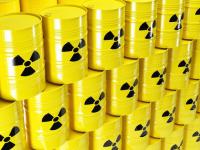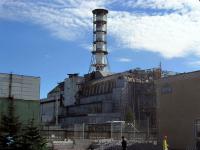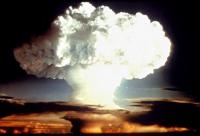-
HHS bolsters U.S. health preparedness for radiological threats
The U.S. Department of Health and Human Services’ (HHS) Office of the Assistant Secretary for Preparedness and Response (ASPR) says that as a part of its mission to help protect Americans’ health following even the most unthinkable of disasters, it is purchasing two medical products to treat injuries to bone marrow in victims of radiological or nuclear incidents. Bone marrow is essential to producing blood.
-
-
Bacteria can help make underground nuclear waste repositories safer
It takes about two hundred thousand years for the radioactivity of spent nuclear fuel to revert to the levels of naturally occurring uranium. As a result, most research into the long-term safety of nuclear waste disposal focuses on processes that tick to a slow geological clock: the mechanics of the rock layers that make up the storage site or the robustness of the protective barriers in place that are engineered to contain the radiation. However, all these studies neglect one key factor: biology. Naturally occurring bacteria could consume pent-up hydrogen gas in nuclear waste repositories to prevent radioactive leaks.
-
-
Terrorism fallout shelters: Is it time to resurrect nuclear civil defense?
Fifty-five years ago, on 6 October 1961, President John F. Kennedy advised Americans to build an underground protective room, commonly known as a “fallout shelter,” in their homes. The American people heeded his advice and began an enormous grassroots effort to construct fallout shelters in every private residence and public building. Today, smaller nations and terrorist groups, such as al-Qaeda, are seeking nuclear weapons. Some nations, like North Korea, already have them. Others may be a decade away. It is not unreasonable to believe that the use of a single nuclear weapon by a rogue nation or a terrorist group now poses a more likely scenario for a nuclear confrontation than a nuclear war between Russia and the United States. We need a strategy to protect ourselves against these adversaries, and right now we don’t have one, except screening cargo. If we don’t find a more effective strategy to thwart nuclear terrorism soon, we may be forced to go back to fallout shelters as our only protective option, whether we like it or not.
-
-
Russia’s ultimatum to US: Reduce commitment to NATO, lift sanctions – or nuclear deal is off
The Kremlin, in an unprecedented series of ultimatums on Monday, said Russia would suspend an agreement it had signed with the United States to turn weapons-grade plutonium into nuclear reactor fuel unless the United States rescinds the sanctions imposed on Russia because of its annexation of Crimea – and also cuts its military commitments to NATO. The Kremlin said that both the economic sanctions and the U.S. military commitments to its NATO allies are “unfriendly” acts to ward Russia.
-
-
Surprise finding could improve future handling of nuclear waste

A researcher at the University of Manchester has made a surprise finding after observing variations of a chemical bond with a radioactive metal called thorium — and this newly revealed relationship could one day contribute to improving nuclear fuel management.
-
-
Radioactive wastewater enters Florida major aquifer after huge sinkhole opens up below fertilizer plant
At least 980 million liters of highly contaminated water — including radioactive substances – has leaked into one of Florida’s largest sources of drinking water. The leak was caused by a huge sinkhole which opened up beneath a fertilizer plant near Tampa. The sinkhole caused highly contaminated waste water to pass into an aquifer which supplies much of the state. The waste water contained phosphogypsum, a by-product of fertilizer production, which contains naturally occurring uranium and radium. the Floridan aquifer aquifer underlies all of Florida and extends into southern Alabama, Georgia, and South Carolina, supplying groundwater to the cities of Tallahassee, Jacksonville, Gainesville, Orlando, Daytona Beach, Tampa, and St Petersburg.
-
-
Assessing the risk from Africa as Libya loses its chemical weapons
Libya’s remaining chemical weapons left over from the Gaddafi regime are now being safely disposed of in a German facility. This eliminates the risk of them falling into the wrong hands. But can these same hands acquire weapons of mass destruction from the rest of Africa? The disposal of Libya’s chemical weapons has lowered the risk of weapons of mass destruction in Africa. But we have seen how far non-state actors are willing to go to either produce or steal such weapons. For example, analysts envision militants known as “suicide infectors” visiting an area with an infectious disease outbreak like Ebola purposely to infect themselves and then using air travel to carry out the attack. Reports from 2009 show forty al-Qaeda linked militants being killed by the plague at a training camp in Algeria. There were claims that they were developing the disease as a weapon. The threat WMD pose cannot be ignored. African countries, with help from bilateral partners and the international community, have broadened their nonproliferation focus. They will need to keep doing so if the goal is effectively to counter this threat.
-
-
Risk of another Chernobyl- or Fukushima-type accident worryingly plausible

The biggest-ever statistical analysis of historical nuclear accidents suggests that nuclear power is an underappreciated extreme risk and that major changes will be needed to prevent future disasters. The researchers’worrying conclusion is that, while nuclear accidents have substantially decreased in frequency, this has been accomplished by the suppression of moderate-to-large events. They estimate that Fukushima- and Chernobyl-scale disasters are still more likely than not once or twice per century, and that accidents on the scale of the 1979 meltdown at Three Mile Island (a damage cost of about $10 billion) are more likely than not to occur every 10-20 years.
-
-
DHS takes delivery of RadSeeker which identifies threat materials in shielded, masked, or concealed situations
The first regular shipments of the Smiths Detection RadSeeker featuring Symetrica’s Discovery Technology Sub-System will begin this fall as the first part of a contract with the Department of Homeland Security (DHS). Symetrica’s Discovery Technology at the heart of RadSeeker identifies threat materials in shielded, masked, or concealed situations.
-
-
N. Korea’s test of miniaturized warhead, submarine-launched ballistic missile, are game changers
North Korea has conducted its fifth nuclear test last night, marking the 68th anniversary of the nation’s founding. Military analysts say the test shows a worrisome improvement in North Korea’s nuclear capabilities: It was the most powerful nuclear test to date, with a 10-kiloton yield – slightly smaller than the yield of the bomb dropped on Hiroshima, estimated to have been between twelve and eighteen kilotons. The warhead tested in the explosion was miniaturized, indicating that North Korea now has the capability to mount a nuclear warhead on a missile. Last night’s test, together with North Korea’s proven progress in launching ballistic missile from submarines, mean that the country is getting closer to possessing a nuclear arsenal capable of hitting the United States.
-
-
U.S. violating nonproliferation agreement: Nuclear experts

More than two dozen nuclear experts, including former U.S. officials under the six preceding presidents of both parties, accused the Obama administration of violating a 2012 nonproliferation agreement to end exports to Europe of bomb-grade, highly enriched uranium (HEU) for production of medical isotopes. The administration proposes to export sixteen pounds of nuclear weapons-grade uranium metal to France to produce medical isotopes in Belgium and the Netherlands.
-
-
A new generation of low-cost, networked, nuclear-radiation detectors
A DARPA program aimed at preventing attacks involving radiological “dirty bombs” and other nuclear threats has successfully developed and demonstrated a network of smartphone-sized mobile devices that can detect the tiniest traces of radioactive materials. Combined with larger detectors along major roadways, bridges, other fixed infrastructure, and in vehicles, the new networked devices promise significantly enhanced awareness of radiation sources and greater advance warning of possible threats.
-
-
Nuclear forensics summer program trains students for a future in nuclear security
A sure sign of summer is the return of interns to the Lawrence Livermore campus. Students interact with premier researchers and access equipment and facilities not available anywhere else, while scientists lay groundwork for advancing their fields. LLNL runs an eight-week summer internship for students interested in nuclear science and its range of specialties — nuclear forensics, environmental radiochemistry, nuclear physics, and beyond. Together, these disciplines support the laboratory’s nuclear security mission through analysis of nuclear processes and properties.
-
-
Reactor safety experts from Sandia help industry learn from Fukushima accident
Reactor safety experts from Sandia National Laboratories and elsewhere are sharing lessons learned in Japan’s Fukushima Daiichi nuclear accident and other severe accidents that pushed nuclear power plants past their limits. The safety experts seek to demystify what happens during an accident, to help engineers/operators learn what decisions they might need to make in the event of an accident at their plants, and to provide insights into the non-intuitive nature of accidents.
-
-
Long-term health effects of atomic bombs dropped on Japan not as dire as perceived
The detonation of atomic bombs over the Japanese cities of Hiroshima and Nagasaki in August 1945 resulted in horrific casualties and devastation. The public perception of the long-term effects of radiation exposure, however, is, in fact, greatly exaggerated. New studies, summarizes over sixty years of medical research on the Hiroshima/Nagasaki survivors and their children, have clearly demonstrated that radiation exposure increases cancer risk, but also show that the average lifespan of survivors was reduced by only a few months compared to those not exposed to radiation. No health effects of any sort have so far been detected in children of the survivors.
-
More headlines
The long view
Keeping the Lights on with Nuclear Waste: Radiochemistry Transforms Nuclear Waste into Strategic Materials
How UNLV radiochemistry is pioneering the future of energy in the Southwest by salvaging strategic materials from nuclear dumps –and making it safe.
Model Predicts Long-Term Effects of Nuclear Waste on Underground Disposal Systems
The simulations matched results from an underground lab experiment in Switzerland, suggesting modeling could be used to validate the safety of nuclear disposal sites.
